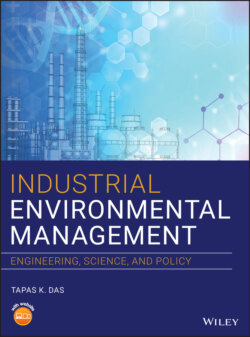Читать книгу Industrial Environmental Management - Tapas K. Das - Страница 74
2.6.1.1 What Happened that Evening!
ОглавлениеDue to lack of environmental regulations, enforcement and compliance, maintenance and operation safety, the plant in Bhopal where the disaster happened started to produce “Carbaryl” in 1977. Carbaryl is mainly used as an insecticide. At first, the production was 2500 T/Y. This was no problem, as the plant had been designed for an output of 5000 T. At the beginning of the 1980s, Carbaryl did not sell very well. For this reason, the owners of the plant started to cut costs. This included employing fewer people, doing maintenance less frequently, and using parts that were made of lower‐grade steel. Closing the plant was being considered as well. When the disaster happened, there was no production at the plant because there was a surplus on the market.
The disaster happened because water entered a tank containing MIC. This caused a chemical reaction which resulted in the buildup of much carbon dioxide, among other things. The resulting reaction increased the temperature inside the tank to reach over 200 °C (392 °F). The pressure was more than the tank was built to withstand. The tank had valves to control the pressure. These were triggered in an emergency, which reduced the pressure. As a result, large amounts of toxic gases were released into the environment. The pipes were rusty. The rust in the iron pipes made the reaction faster. All the contents of the tank were released within a period of about two hours. The water had entered the tank because of a sequence of events. The tank had been maintained badly. When cleaning work was done, water could enter the tank. The leakage of MIC gas from Union Carbide Corporation, Bhopal, gave impetus to the development of environmental law and principles of quantum of compensation (Union Carbide v. Union of India 1989).
